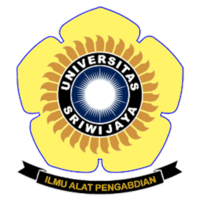Optimalisasi Lahan Suboptimal untuk Akuakultur: Food Safety Indonesia untuk Dunia
Abstract
Hardi, E.H. (2023). Suboptimal land optimization for aquaculture: Indonesia's contribution to global food security. In: Herlinda S et al. (Eds.), Prosiding Seminar Nasional Lahan Suboptimal ke-11 Tahun 2023, Palembang 21 Oktober 2023. (pp. 25-32). Palembang: Penerbit & Percetakan Universitas Sriwijaya (UNSRI).
In Indonesia, the subtropical land is dominated by peat and mangroves, both of which have the potential to be used for aquaculture. The implementation of smart aquaculture, in which the management uses four concepts including natural activity, zero waste, circular activity, and sustainability. Optimizing the mangroves ecosystem as an area for filtration and sedimentation for aquaculture and waste air before it is discharged is an important part of maintaining ponds. The utilization of plant extracts as antibacterial, immunostimulants, prebiotics, and natural pesticide is the foundational tenet of smart silvofishery as opposed to the cultivation practice of using chemical fertilizers and pesticides. There are four advantages to smart silvofishery: mangrove litter supplies total nutrients (nitrogen, potassium, and phosphorus); increasing total plankton (8 phytoplankton species and 11 zooplankton species); suppressing pathogens in ponds; increasing the amino acid and fatty acid content of shrimp meat; and increasing pond production. Mangrove litter supplies total nutrients (nitrogen, potassium, and phosphorus). Aquaculture carried out in peat and mangrove environments is safe (for the environment, fish, and customers) when smart silvofishery is utilized. This results in increased productivity while also maintaining the safety of the products that are created.
Keywords
Full Text:
PDFArticle Metrics
Abstract view : 207 timesPDF - 250 times
Refbacks
- There are currently no refbacks.

